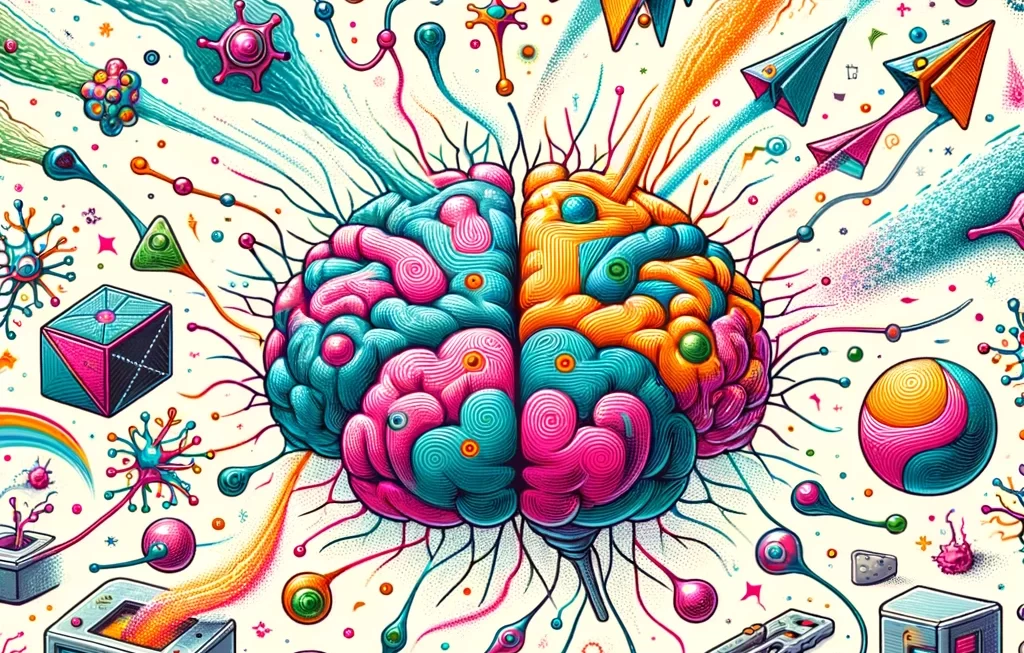Welcome to a journey through the microscopic world of our brain, where every thought, memory, and sensation originates from a complex but fascinating process known as synaptic transmission. This guide is crafted for those who are curious about how our brains work but might find scientific jargon a bit daunting. Here, we’ll decode the intricate ballet of neurons and neurotransmitters in a way that’s accessible to everyone. Let’s dive into the cellular conversations that power the symphony of the mind.
Synaptic Transmission: The Heartbeat of Communication
Synaptic transmission is the process through which neurons (brain cells) communicate with each other. Think of it as passing notes in class, but instead of paper, neurons use chemical messengers called neurotransmitters. This communication happens at synapses, tiny gaps between neurons where the magic of the mind’s conversations unfold.
Steps of Synaptic Transmission: A Dance of Molecules
- Electrical Impulse Arrival: An electrical signal, or action potential, travels along a neuron to the synapse.
- Neurotransmitter Release: This electrical signal triggers the release of neurotransmitters stored in tiny vesicles.
- Crossing the Synaptic Gap: Neurotransmitters then journey across the synapse to the neighboring neuron.
- Binding to Receptors: They bind to specific receptors on the surface of the next neuron, like a key fitting into a lock.
- Signal Initiation in the Receiving Neuron: This binding causes changes in the receiving neuron, potentially generating a new action potential.
- Clearing the Stage: Finally, neurotransmitters are either broken down or taken back up by the first neuron, clearing the synapse for the next message.
Let’s try to understand these steps by an example:
Steps of Synaptic Transmission: A Story of a Message
- Starting the Journey (Electrical Impulse Arrival): A thought or feeling starts like a person deciding to send a letter. This person writes a letter (the electrical signal) and decides it’s time to send it out.
- Sending the Letter (Neurotransmitter Release): The person goes to the post office (the end of the neuron), where the letter is packaged into a mailbox (vesicle) and then sent out into the street (synaptic gap).
- Crossing the Street (Crossing the Synaptic Gap): The letter (neurotransmitter) now needs to cross the street to reach the building on the other side. It’s like throwing a paper airplane from one side to the other.
- Delivery (Binding to Receptors): Once the paper airplane reaches the other side, it needs to find the right mailbox (receptor) to be delivered. Each mailbox only accepts certain kinds of letters, ensuring the message gets to the right place.
- Reading the Letter (Signal Initiation): The person in the building receives the letter, reads it, and decides to respond. This response might be another letter or an action, like deciding to go out or call a friend.
- Preparing for the Next Letter (Clearing the Stage): After the letter is read, the paper airplane is recycled (neurotransmitters are taken back or broken down), making the street ready for the next message to be sent.
Types of Neurotransmitters and Receptors: The Characters of the Story
Neurotransmitters are the brain’s chemical messengers, each playing different roles in the story of our thoughts and feelings. Some of the stars include:
- Serotonin: This neurotransmitter affects how happy or sad the receiver feels. It’s like getting a letter that can either brighten your day or make you a bit gloomy.
- Dopamine: Imagine receiving a letter that makes you feel really good, like a congratulatory message. That’s dopamine, making you feel rewarded and motivated.
- Acetylcholine: This neurotransmitter is about getting things done, like reminding you to move or remember something important.
- GABA: Think of GABA as a neurotransmitter telling you to relax and not worry too much, helping keep everything calm.
Receptors are the proteins on neurons that neurotransmitters bind to, initiating various effects. Just as a lock is designed for a specific key, receptors are specific to certain neurotransmitters, determining the outcome of their messages.
The Concept of Synaptic Plasticity: The Brain’s Ability to Learn
Synaptic plasticity is the brain’s remarkable ability to strengthen or weaken synapses over time. It’s the foundation of learning and memory. Imagine practicing the piano. At first, the music might be clumsy, but as you practice, your brain strengthens the synaptic connections involved in playing the piano, making the music flow more smoothly. This adaptability ensures our brains are continuously shaped by our experiences.
Synaptic transmission and plasticity are at the core of everything we think, feel, and do. From the basic steps of synaptic transmission to the diverse roles of neurotransmitters and receptors, we’ve uncovered how these processes enable our brains to communicate, learn, and adapt. By understanding these fundamental concepts, we can appreciate the incredible complexity and beauty of our brain’s inner workings.
FAQs
Q: Can the brain create new synapses? A: Yes, the brain can form new synaptic connections, a process known as synaptogenesis, which is crucial for learning and memory.
Q: How do drugs affect synaptic transmission? A: Many drugs work by altering synaptic transmission, either by enhancing or inhibiting the release of neurotransmitters, or by mimicking or blocking their action at receptors.
Q: is it possible that the neurotransmitter is binding to the wrong receptor? A: Yes, neurotransmitters can bind to “wrong” receptors, but this scenario is typically more nuanced in the context of how the brain functions. Here’s a simplified explanation:
Neurotransmitters are chemical messengers that neurons release to communicate with each other. They cross the synaptic gap (the space between neurons) and bind to receptors on the receiving neuron. These receptors are like specialized locks that are meant to fit specific neurotransmitter “keys.” In an ideal scenario, each neurotransmitter binds to its corresponding receptor, ensuring that the correct message is delivered.
However, the specificity of this binding process can vary, and several factors might lead to neurotransmitters interacting with receptors they are not ideally meant to bind to:
- Receptor Similarity: Some receptors may share similar structures, making it possible for a neurotransmitter to bind to a receptor type it normally wouldn’t. This is somewhat akin to a key that can open locks it’s similar to, but not exactly designed for.
- Drug Interference: Drugs and other exogenous substances can mimic the structure of certain neurotransmitters and bind to their receptors, potentially activating them inappropriately or blocking the natural neurotransmitter from binding. For example, nicotine mimics acetylcholine, binding to its receptors and stimulating them in a way that acetylcholine naturally would.
- Disease States: Certain neurological diseases or disorders can alter the way neurotransmitters interact with receptors, either through receptor malfunction or changes in neurotransmitter levels. For instance, in Parkinson’s disease, the loss of dopamine-producing neurons leads to impaired motor function because there’s not enough dopamine to bind to its receptors in parts of the brain that control movement.
- Neurotransmitter Overflow: Under certain conditions, if there’s an excess of a neurotransmitter, it might spill over to adjacent synapses where it can bind to receptors it normally wouldn’t interact with. This is more of an issue of concentration rather than the neurotransmitter actively seeking the wrong receptor.
While the brain strives for efficiency and accuracy in neurotransmitter-receptor interactions, the potential for “mismatches” exists and can have significant implications for brain function and behavior. These interactions are complex and influenced by a multitude of factors, including genetics, environment, and health status, underscoring the complexity of brain chemistry and its impact on human physiology and behavior.
Further References and Additional Reading
- “Neuroscience: Exploring the Brain” by Mark F. Bear, Barry W. Connors, and Michael A. Paradiso – A comprehensive guide to the principles of neuroscience.
- The Brain Facts Book by the Society for Neuroscience – Offers a detailed overview of synaptic transmission and plasticity.




